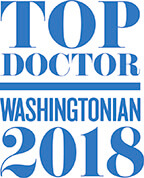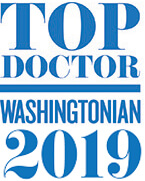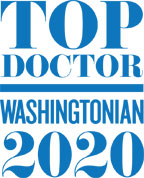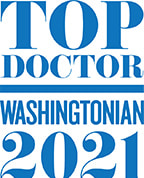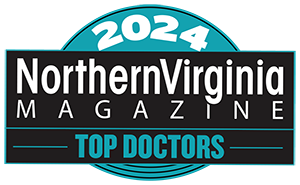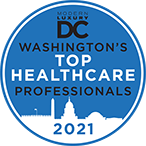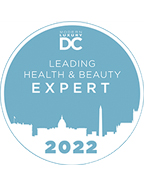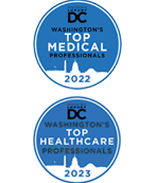
Cataracts are a very common eye condition that can occur in one or both eyes. Age-related cataracts usually develop slowly in adults over age 40. More than half of all Americans develop cataracts by age 80. Secondary cataracts can develop from diseases, steroid use, or after a different type of eye surgery. Most cataracts are easily treated with a simple, painless surgery. More than 98% of patients report better vision after cataract surgery.
How Do Cataracts Affect Vision?
The lens of the eye is normally clear with a flexible, jelly-like consistency. For clear vision, light needs to pass through the transparent lens to the retina. A cataract is a yellowish clouding over of the lens of the eye which grows thicker and harder over time. Most age-related cataracts develop from protein clumps in the lens. These may occur because of lifetime exposure to the sun’s ultraviolet light.
How Can I Tell If I Have A Cataract?
Only an eye doctor can diagnose whether you have a cataract or another type of vision problem. If you have any of the symptoms below, you should have your eyes checked by a specialist. Schedule an appointment at our See Clearly Vision offices in Arlington or Tyson’s Corner.
Common signs of a cataract include the following:
- Gradual vision deterioration and blurriness
- Trouble driving at night
- Glare from headlights or sunlight seems too bright
- Halos around bright lights at night
- Difficulty reading
- Colors appear faded
What Should I Do If I Have A Cataract?
Many people have early-stage cataracts for years before they need surgery. Here are some suggestions for how to take care of yourself in the early stages of cataracts:
- Check your cataract by having a comprehensive eye examination with dilating drops. You should do this every year if you’re over age 65, and every two years if you’re under age 65.
- Wear good quality sunglasses to protect the eyes from the sun’s damaging UV rays.
- Use brighter lights and a magnifier if you are having trouble reading.
- Stay up to date with glasses or contact lens prescriptions to maximize vision.
- Quit smoking.
- If you have diabetes, keep your A1C in a healthy range.
Cataract Surgery
Incredible advances have been made in cataract surgery techniques over the past two decades. Every year, millions of people have cataract surgery. It is a safe outpatient surgical procedure that takes less than a half-hour. Most have a positive experience with no complications and a great visual outcome.
When Is It Time To Have Cataract Surgery?
Most ophthalmologists recommend cataract surgery when cataracts interfere with their quality of life. Patients may feel that a cataract is interfering with their job, driving, or ability to complete simple tasks.
Does A Cataract Have To Be “Ripe” For Surgery?
No. People used to have to wait until their cataracts “ripened” (hardened) before having surgery. This is because the lens had to be removed intact through a large incision in the eye. Today, most cataracts are removed by breaking the lens into small pieces and removing them by suction.
Does Insurance Pay For Cataract Surgery?
Most insurances, including Medicare, pay for cataract surgery when it is medically necessary. Some insurance companies may need your eye surgeon to submit vision measurements before approving payment for the surgery. Every insurance plan has different policies, co-pays, and deductibles. Contact your insurance company before scheduling surgery to find out what costs you will be responsible for. Medicare and most insurance companies will pay for a standard monofocal intraocular lens as part of cataract surgery. But there are new types of lenses available, called “premium” intraocular lenses.
While most insurances cover the basic cost of surgery, you would have to pay for the cost of the premium lens. Your eye doctor at See Clearly Vision will explain the benefits and costs of these lenses. Many surgeons prefer to use a laser-assisted method of cataract surgery when inserting a premium lens.
How Is Traditional Cataract Surgery Performed?
Traditional cataract surgery is also known as phacoemulsification. The eye surgeon uses a scalpel to create a small incision in the cornea. A small instrument is then inserted through this opening and goes behind the pupil to the capsule containing the eye’s lens. The surgeon creates a round opening in the capsule and inserts a probe. The probe applies ultrasound waves to break up the cloudy lens and then suctions out the broken-up pieces. An artificial intraocular lens (IOL) is inserted in the capsule to restore vision.
What Are The Possible Complications Of Cataract Surgery?
No surgery is risk-free, but the risk of complications with cataract surgery is very low. Infection, swelling, and bleeding can occur in various parts of the eye. Your See Clearly Vision eye doctor will review possible complications with you before you schedule your procedure.
Laser Cataract Surgery
The major difference between traditional and laser-assisted cataract surgery is how the incisions are made. Laser cataract surgery incisions are made by a programmed laser rather than by a surgeon using a scalpel. Laser cataract surgery allows our surgeons to use real-time diagnostic tools, which also means that surgeons have greater control and precision. Laser cataract surgery additionally allows our surgeons to correct for astigmatism when used in combination with a premium IOL.
How Is Laser-Assisted Cataract Surgery Performed?
During laser-assisted cataract surgery, a camera/ultrasound device is placed over your eye. This is to map the eye’s surface and gather information about your lens. The device sends this information to a computer that programs the laser. It describes the exact location, size, and depth of the incisions. The surgeon then uses the programmed laser to make the corneal incision and the opening in the capsule. An ultrasound probe breaks the lenses into pieces and suctions them out. The surgeon then places the new replacement artificial IOL into the capsule.
Premium Lenses
The choice of intraocular lenses (IOLs) for cataract surgery depends on several things. This includes your eyeglass prescription, your vision goals, and your financial situation. Make sure to discuss your lifestyle and goals with your See Clearly Vision surgeon. Let your surgeon know whether you wish to cut out your dependence on glasses altogether, and what activities are most important to you.
What Are The Choices of Intraocular Lenses?
Monofocal IOLs are the most common type of lenses used in cataract surgery. Monofocal IOLs are the only lenses covered by Medicare, which may be paid in full depending on your deductible. They can be set for one focal point – distance, medium, or up-close vision. Most people choose a lens that corrects for distance vision and then choose to use reading glasses when needed.
Premium IOLs can allow patients to achieve a variety of vision goals:
- Light Adjustable Lenses are the only intraocular lens (IOL) that can be customized after cataract surgery. See Clearly Vision is proud to be one of the only practices in the Northern Virginia and DC Metropolitan region to provide this cutting edge technology to our cataract surgery patients. Click here to learn more about the RxSight™ Light Adjustable Lens.
- Multifocal IOLs contain zones that can be set for both distance and near vision. The brain learns to automatically select for the focus it needs.
- Accommodative IOLS can move or change shape inside the eye. This allows for focus at different distances.
- Toric IOLs correct the refractive error caused by astigmatism. They are the only IOL specially designed for patients with astigmatism.
New premium lens products continue to evolve in design and capabilities. Your eye doctor will recommend which specific premium IOL will best suit your needs.
Design Your Own Vision with RxSight™ Light Adjustable Lens
The RxSight™ Light Adjustable Lens is the first and only intraocular lens (IOL) that can be customized after cataract surgery. See Clearly Vision is proud to be one of the only practices in the Northern Virginia and DC Metropolitan region to provide this cutting edge technology to our cataract surgery patients.
The Light Adjustable Lens is made of a special photosensitive material that can be adjusted in response to ultraviolet (UV) light. This optimization is done by your eye doctor in the weeks following lens implantation through a series of non-invasive light treatments that take only a few minutes each. You will have the unique ability to adjust and preview your vision until it meets your personal desires and lifestyle requirements. The Light Adjustable Lens delivers superior vision outcomes that non-adjustable IOLs cannot match.
Wondering if it may be time for cataract surgery? Schedule a cataract screening at See Clearly Vision in Arlington or Tysons Corner today! You can find more information about Cataract Surgery on the American Academy of Ophthalmology website!

